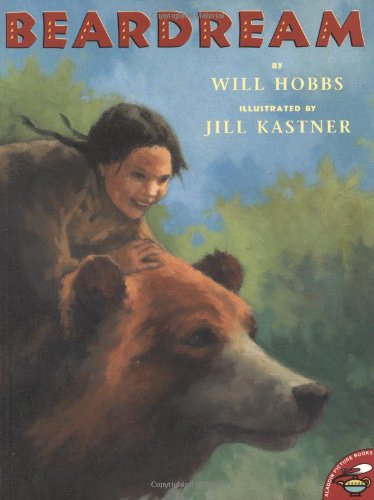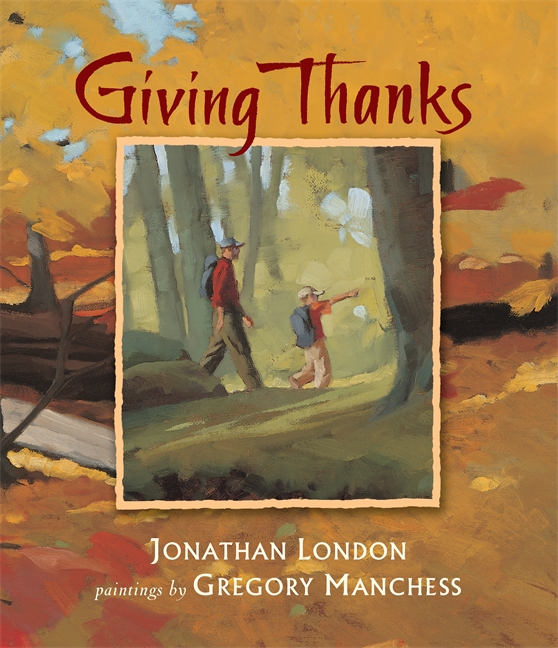
As a child growing up in Alaska, the author “came under the spell of mountains, rivers, and bears,” according to the jacket of his seventh book. It also promises a story in which a bear’s great secret will be shared with a young Indian boy. Gorgeous watercolors with soft edges add a dream-like feeling to the illustrations in Beardream. There’s a sunny forest, a bear in a stream, and a steep and mountainous valley, and both the pictures and text seem to celebrate the great outdoors.
“It was springtime in the mountains but the Great Bear was still sleeping,” writes Will Hobbs – even though the picture shows the bear capturing a large fish. “Long after all the other bears had left their dens, he was still dreaming.” There’s a grassy field that’s dotted with wildflowers, and the author seems to be honoring the bear’s point of view. And because this is the bear’s dream, even the rocky face of the mountain looks like the face of a bear!
The story offers a simple description of the adventure of an Indian boy named Short Tail. “Where is old Honey Paws?” he asks his tribe, concerned about the Great Bear and his prolonged hibernation. The book is dedicated to “the Ute children of today and tomorrow.” It’s a great story for children, because the boy strikes out on his own, climbing a steep mountainside in search of the missing bear.
“[S]oon he was climbing the mountain on all fours, like a bear,” Hobbs writes. The boundaries are getting blurry in this story, and they’re about to get blurrier. When the boy rests on the hillside, the giant mountain now becomes the face of a boy. And in the boy’s dream – or is it the bear’s dream? – the boy and the bear will finally meet.
“Wake up, Great” the boy shouts into the dark cave from a colorful hill. The growling bear snarls and knocks the boy down. But in the dream, the boy tells the bear that everyone had been worried about him. “The Great Bear sad down on his haunches and thought about how respectful the boy was.”
It’s a realistic story, which makes its fanciful touches even more special. On a moonlit hillside, the boy travels through silver mists riding on the bear’s back. There’s a wooded clearing where the bears secretly gather to celebrate the end of winter. They dance to the rhythm of thunder, in a brown, fuzzy illustration. The bear dance is a real tradition of the Ute Indian tribe, and the author is re-telling the legend of its creation.
“‘Go back and tell the People,’ the Great bear told Short Tail. ‘Show them how to do the bear’s dance.'”
